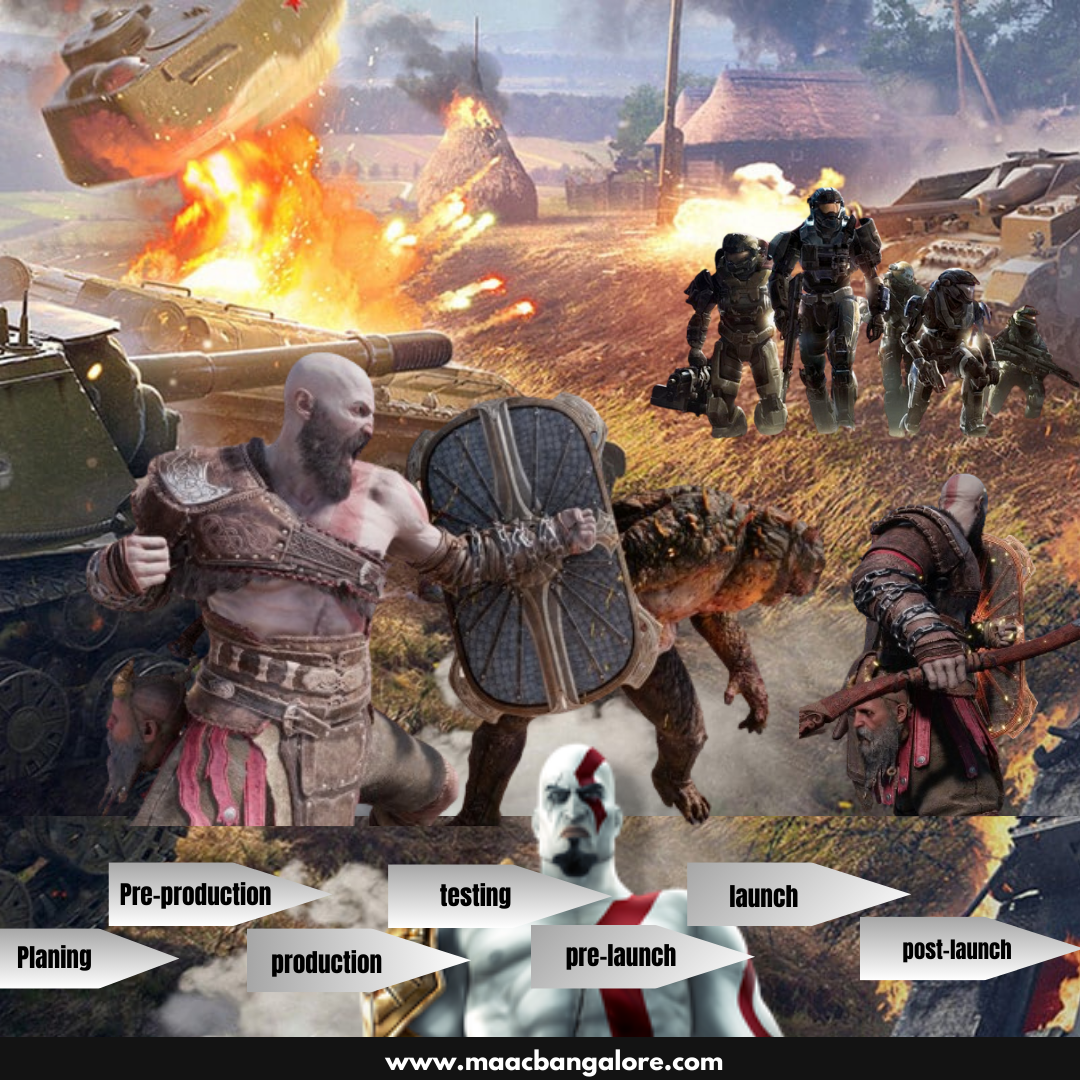Unveiling the 7 Major Stages of Game Design: Crafting Digital Masterpieces
Embarking on the journey of game design is a thrilling endeavor, where creativity converges with technical finesse to shape digital realms. Understanding the seven major stages of game design is paramount for developers aiming to create immersive and captivating gaming experiences.
Major Stages of Game Design:
- Conceptualization: Crafting the Blueprint
At the inception of game design, the conceptualization stage sets the tone for the entire project. Here, ideas are born and refined, evolving into a comprehensive blueprint that outlines the game’s core concept, mechanics, and overall vision. Developers brainstorm, conduct market research, and define the unique selling points that will distinguish their game in a competitive landscape.
- Pre-Production: Planning for Success
Transitioning from concept to pre-production involves meticulous planning and resource allocation. This stage focuses on defining the scope, setting milestones, and creating a realistic timeline for development. Key decisions regarding the technology stack, platforms, and development tools are made during pre-production, laying the groundwork for a streamlined and efficient production phase.
- Production: Bringing Ideas to Life
The production stage is the heart of game development, where the conceptualized ideas begin to materialize. Artists, programmers, and designers collaborate to create assets, code the game mechanics, and integrate audio elements. Iterative testing and feedback loops are crucial at this stage, ensuring that the evolving game aligns with the original vision while addressing any unforeseen challenges.
- Testing and Quality Assurance: Refining the Experience
Testing and quality assurance are pivotal stages that ensure a polished and bug-free gaming experience. To find and fix problems with gameplay, performance, and the overall user experience, extensive testing is done. Quality assurance teams play a vital role in refining the game, contributing to its stability and ensuring it meets or exceeds player expectations.
- Launch and Distribution: Taking Flight
The launch and distribution stage mark the culmination of efforts, as the game is introduced to the world. Developers focus on marketing strategies, creating buzz around the game through trailers, teasers, and social media campaigns. Choosing the right distribution platforms and optimizing for maximum visibility are key factors in achieving a successful launch and reaching a broad audience.
- Post-Launch Support: Nurturing Longevity
Post-launch support is an ongoing commitment to the gaming community. The developers are releasing updates, patches, and new content to ensure that the game remains fresh and relevant. Addressing player feedback, fixing any remaining bugs, and staying responsive to the evolving gaming landscape contribute to the longevity and success of the game post-launch.
- Community engagement: to foster a devoted fan base.
Building a dedicated fan base is not just about creating a game; it’s about nurturing a community. A sense of connection and loyalty is fostered by interacting with the players through forums, online networks, and live events. Developers can gather valuable insights, understand player preferences, and tailor future updates to meet the expectations of their community, ensuring sustained success.
In the ever-evolving world of game development, going through the seven stages is a never-ending process that requires creativity, technical know-how, and an in-depth understanding of player behavior. By mastering each stage, developers will be able to create digital masterpieces that appeal to audiences and endure the test of time, leaving an indelible mark on the evolving gaming landscape.
The 7 major stages of game design journey, are a testament to the dedication and skill required to create memorable gaming experiences. Each stage contributes to the intricate tapestry of game development, and mastering them unlocks the potential for groundbreaking creations. Aspiring game designers take note – the path to success lies in understanding and navigating these essential stages with precision and creativity.


Recent Comments